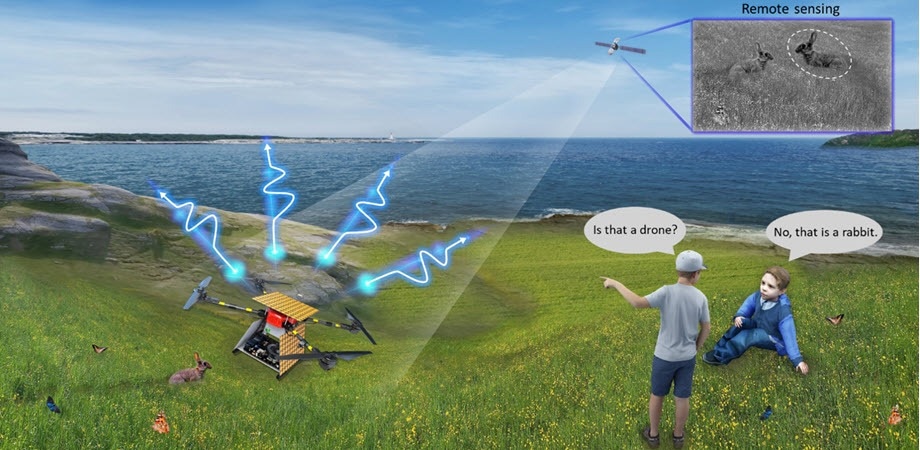Reviewed by Lexie CornerMar 7 2024
The notion of objects vanishing seamlessly, not only in controlled lab settings but also in everyday situations, has long fascinated people. This concept symbolizes the evolution of human civilization, from early camouflage methods to the present-day advanced metamaterial-based cloaks.
 Autonomous cloaked drone may be disguised as another object—for instance, a rabbit—amid kaleidoscopic environments. Image Credit: Chao Qian, Zhejiang University.
Autonomous cloaked drone may be disguised as another object—for instance, a rabbit—amid kaleidoscopic environments. Image Credit: Chao Qian, Zhejiang University.
This objective was recently emphasized in Science as one of the “125 questions: exploration and discovery.” Scientists from Zhejiang University have made significant progress in this area by developing an intelligent aeroamphibious invisibility cloak. This novel cloak is designed to sustain invisibility in dynamic environments, effectively counteracting external stimuli.
Despite several years of research and the development of several prototypes of invisibility cloaks, creating an aeroamphibious cloak that can carry out real-time manipulation of electromagnetic scattering in dynamic environments remains a significant challenge. The obstacles are diverse, including the need for multifaceted-amplitude tunable metasurfaces and the lack of intelligent algorithms to address issues such as incomplete inputs and non-uniqueness.
Attempting to resolve these challenges directly, a team of researchers at Zhejiang University has introduced a self-driving cloaked remote-controlled drone. As detailed in the journal Advanced Photonics, this drone flawlessly integrates the functions of perception, decision-making, and execution. The critical aspect of this innovation lies in spatiotemporal modulation used on reconfigurable metasurfaces, allowing for the customization of scattering fields across both space and frequency fields.
The scientists suggest using a generation-elimination neural network, also called stochastic-evolution learning, to power this innovation. This network provides global guidance to the spatiotemporal metasurfaces, automatically pursuing ideal solutions with maximum probabilistic inference. This approach helps resolve the one-to-many problems inherent in inverse design.
In a pioneering experiment, the research team applied this concept on an autonomous drone platform, showcasing adaptive invisibility across three canonical landscapes: land, sea, and air.
This combination of deep learning, spatiotemporal metasurfaces, and modern control systems expands the application of invisibility cloaks to aerial platforms. The integrated neural network acts as an advanced commander, deciphering the intricate interaction between waves and metasurfaces. This innovation marks a new era in inverse design, providing solutions to many-to-many correspondences.
In addition to its immediate applications, this innovation is a catalyst for stimulating future research in materials discovery and the progress of adaptive metadevices. In the future, further advancements can tackle existing limitations, such as bandwidth constraints and challenges associated with full polarization.
Journal Reference:
Qian, C., et al. (2024) Autonomous aeroamphibious invisibility cloak with stochastic-evolution learning. Advanced Photonics. doi: 10.1117/1.AP.6.1.016001